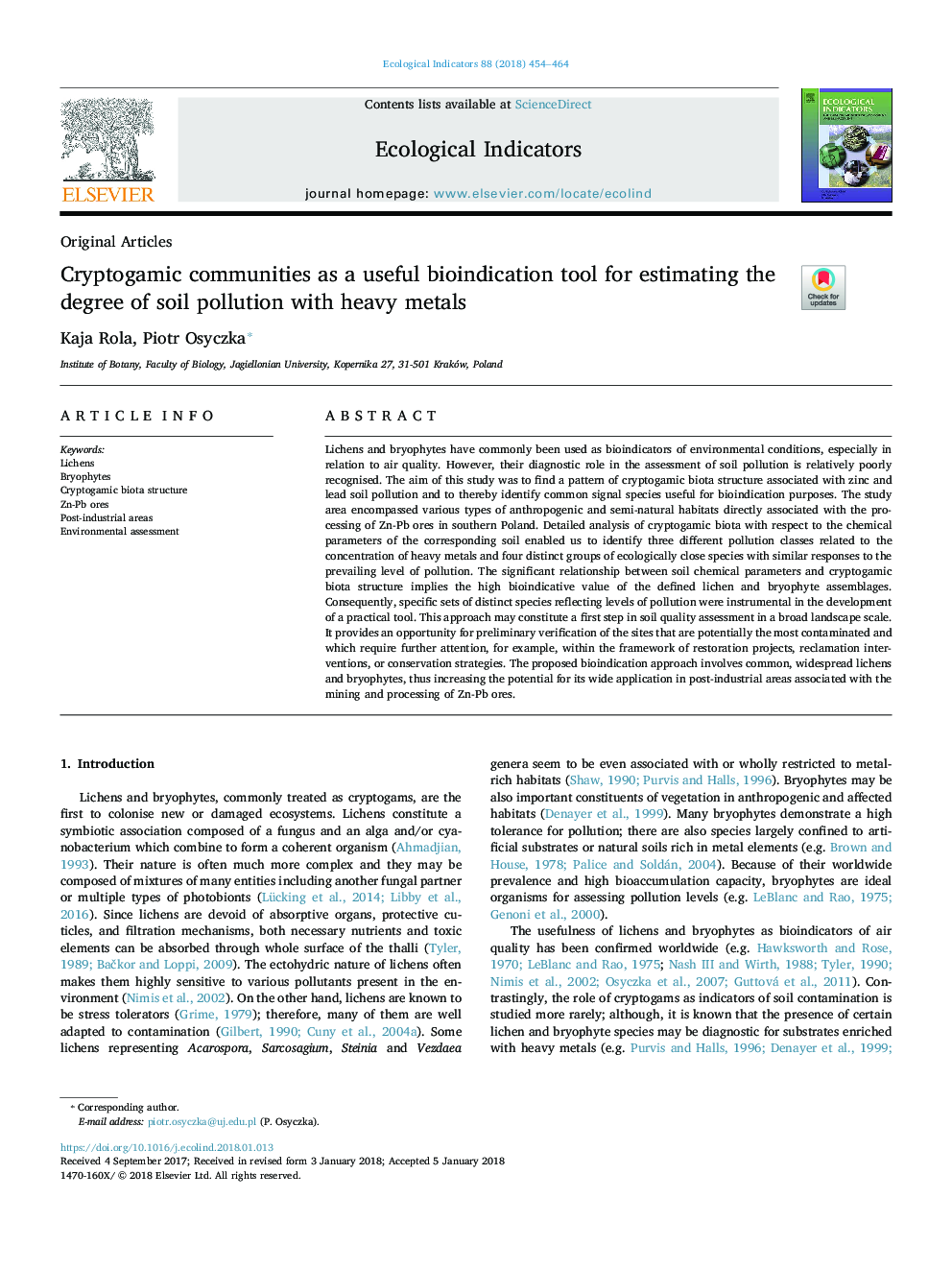| Article ID | Journal | Published Year | Pages | File Type |
|---|---|---|---|---|
| 8845642 | Ecological Indicators | 2018 | 11 Pages |
Abstract
Lichens and bryophytes have commonly been used as bioindicators of environmental conditions, especially in relation to air quality. However, their diagnostic role in the assessment of soil pollution is relatively poorly recognised. The aim of this study was to find a pattern of cryptogamic biota structure associated with zinc and lead soil pollution and to thereby identify common signal species useful for bioindication purposes. The study area encompassed various types of anthropogenic and semi-natural habitats directly associated with the processing of Zn-Pb ores in southern Poland. Detailed analysis of cryptogamic biota with respect to the chemical parameters of the corresponding soil enabled us to identify three different pollution classes related to the concentration of heavy metals and four distinct groups of ecologically close species with similar responses to the prevailing level of pollution. The significant relationship between soil chemical parameters and cryptogamic biota structure implies the high bioindicative value of the defined lichen and bryophyte assemblages. Consequently, specific sets of distinct species reflecting levels of pollution were instrumental in the development of a practical tool. This approach may constitute a first step in soil quality assessment in a broad landscape scale. It provides an opportunity for preliminary verification of the sites that are potentially the most contaminated and which require further attention, for example, within the framework of restoration projects, reclamation interventions, or conservation strategies. The proposed bioindication approach involves common, widespread lichens and bryophytes, thus increasing the potential for its wide application in post-industrial areas associated with the mining and processing of Zn-Pb ores.
Related Topics
Life Sciences
Agricultural and Biological Sciences
Ecology, Evolution, Behavior and Systematics
Authors
Kaja Rola, Piotr Osyczka,
